Exploring the historic Venus silver mill
Regular readers here have seen many photos of the old mill for the Venus silver mine over the years, and I decided on the spur of the moment on May 13th to show you much more of it. And “more” turned out to be much more – there are 34 photos in this post 🙂
Both of the pulloffs near the mill were blocked in 2007 to discourage people from going into the mill, so it’s about a half-mile walk from the nearest parking now. The government’s Venus Mill brochure has a banner stating: “The mill and slope are unstable and dangerous. Please do not stop at this site – it is closed to the public.” The mill and to a lesser degree even the hike to it, are indeed dangerous, and unlike most of my trip reports, this one isn’t meant to encourage anyone else to repeat it. In fact I told myself that this would be my last time – that I’ve taken all the photos of the interior that I need.
It was noon by the time I was ready to start walking. This was as perfect a day as I’ve ever seen on Windy Arm, with superb reflections, not a cloud in the sky, and the temperature about 22°C (72°F).
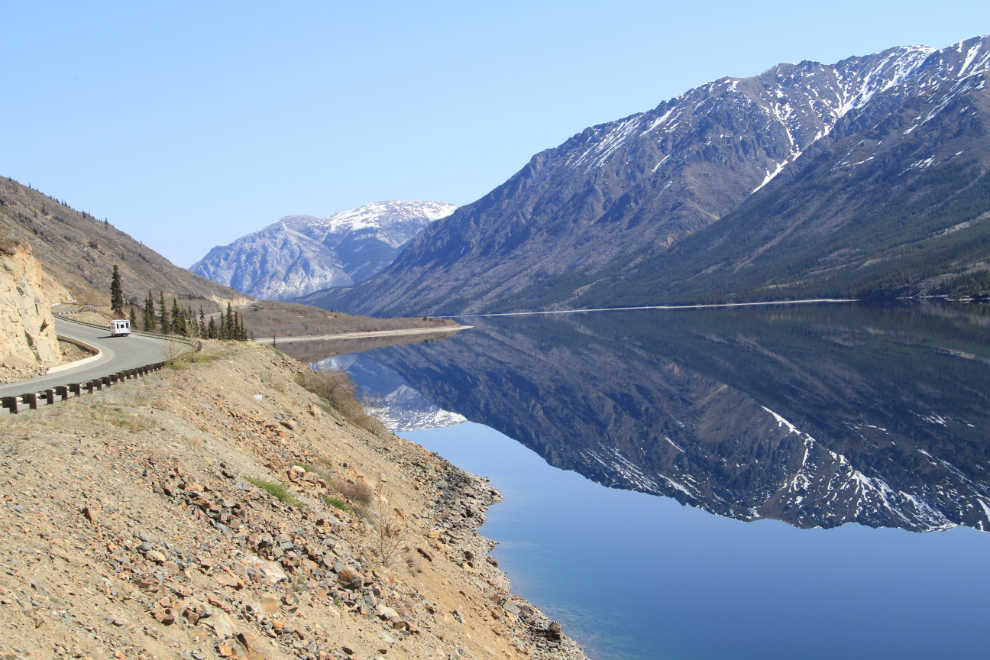
The view up from the parking spot to Dail Peak is pretty impressive, too!
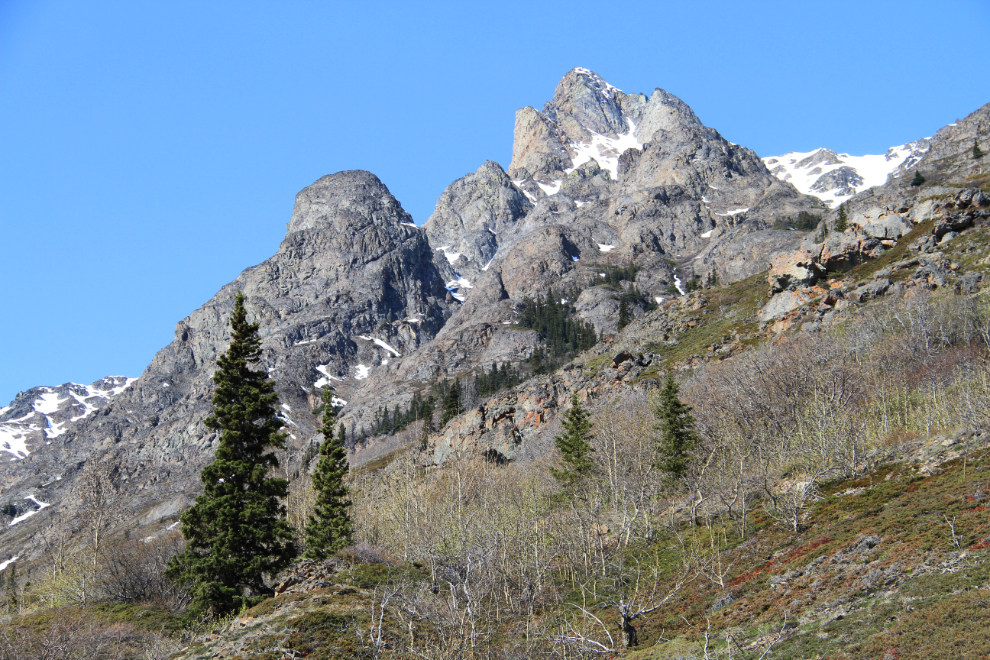
There is no good route down to the beach – the slopes are all steep and unstable and there’s thick brush at the bottom of some.

This was the mine that supplied ore to the mill using an aerial tramway, one tower of which can be seen in the photo.
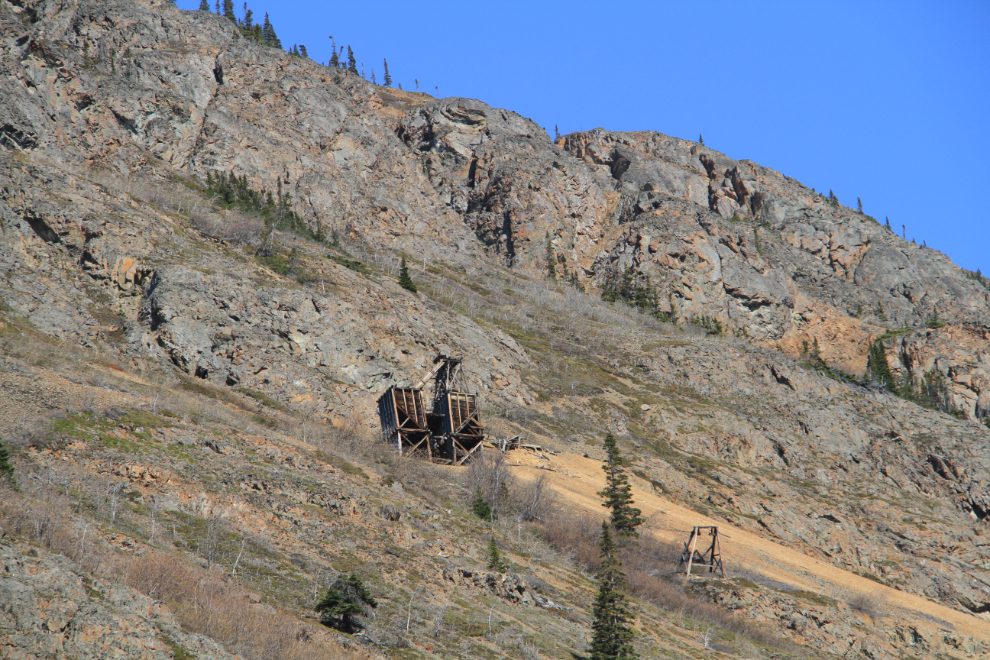
Until it was washed away by exceptionally high water in 2006, a log warehouse, built in about 1905 during the early stages of development of the silver mine, stood here (see it and the mill manager’s house in this article). Now only the ruins of a stone-and-log dock show where it was.

A closer look at the warehouse dock. This 100 yards or so is one of the very few stretches of easy walking along the shore near the mine.
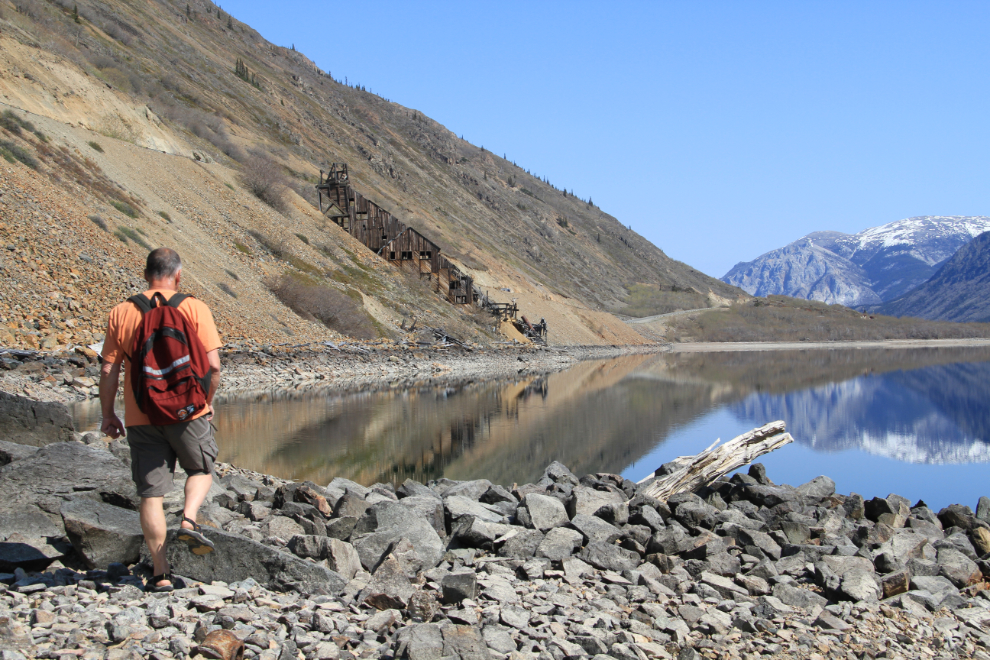
There are a few artifacts remaining around the warehouse site, including an ore car and this piece from a pump or compressor.
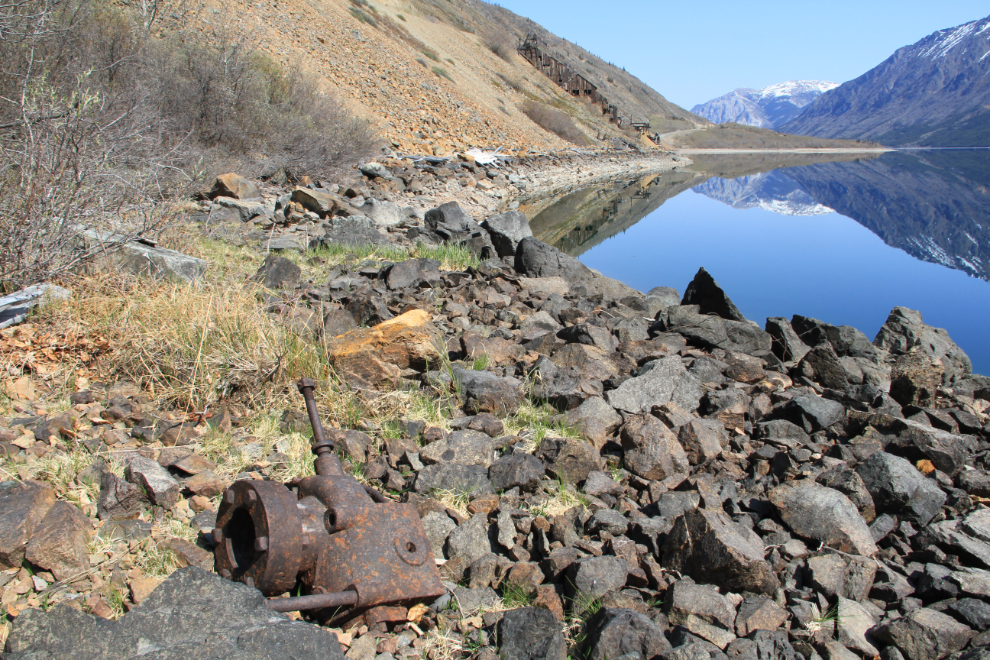
Only a few boards remain from the large assay office and mill manager’s house, which collapsed in the Spring of 2005.

Now things get really interesting! The mill, with the mine that fed it at the upper left. Many of the descriptions of the mill that follow are cut-and-pasted from my book about the mines, Fractured Veins & Broken Dreams. By 1908, the glory days of the Conrad mines were over, and the timing of the construction of the concentrator could hardly have been worse. Due to huge increases in the production of silver around the world, the price had dropped 20% during the year, to a new low of barely over 50 cents per ounce.
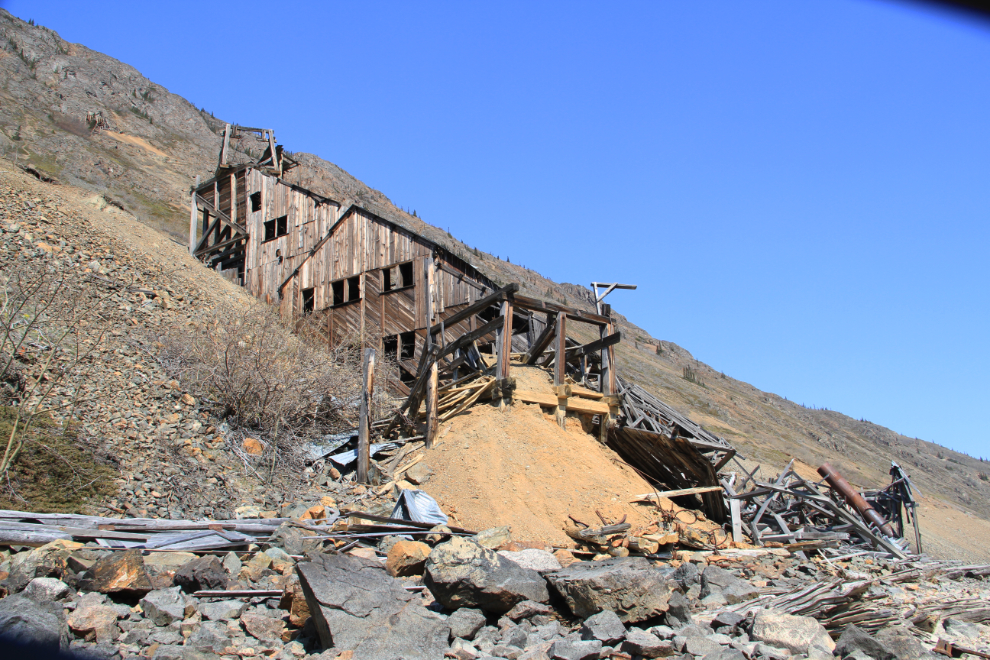
The slope below the dock is littered with artifacts. In 1995 or ’96 I went scuba diving along and down that slope, looking to add more detail for my book about the mines. While there was lots of material, I didn’t find anything notable.
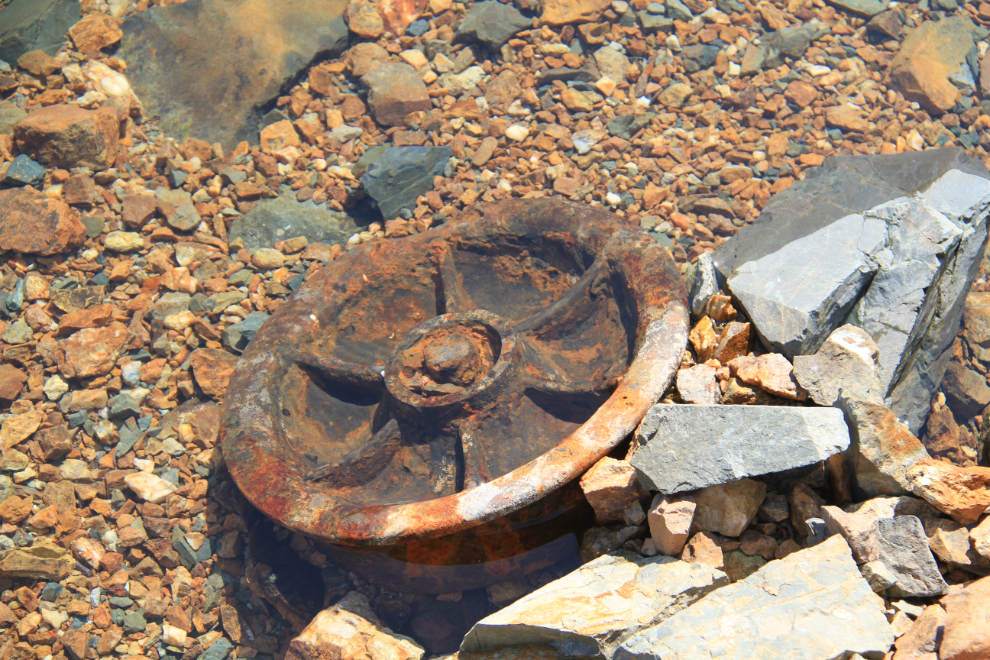
When it opened in the Fall of 1908, the concentrator was powered by a 75 horsepower gasoline engine and this 100-horsepower boiler, but within a few weeks a Pelton water-wheel had arrived from Fairbanks, Morse & Company, and had been installed at the foot of Pooley Canyon to supply electrical power.
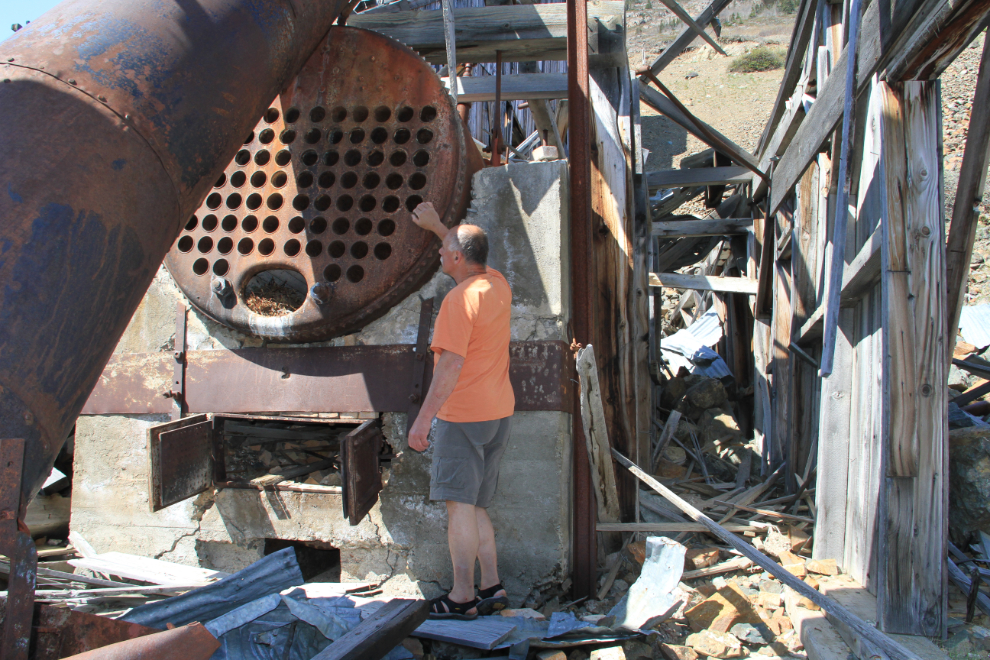
As with all of Colonel Conrad’s other purchases, the concentrator, with a price tag of $60,000, was the most modern available at the time; it was also to be the first large concentrator in the Yukon, with a capacity of 100 tons per day. The extensive sampling and testing that had been conducted over the past two years had convinced Conrad and Vance that the most appropriate mill would be one using the Washoe process of pan-amalgamation. This process, which had become the most widely-used milling method in the United States since its development in Nevada in 1861, was likely chosen due to the high percentage of sulphides in the majority of the Windy Arm ores; the Washoe process gave particularly high yields with such ores.
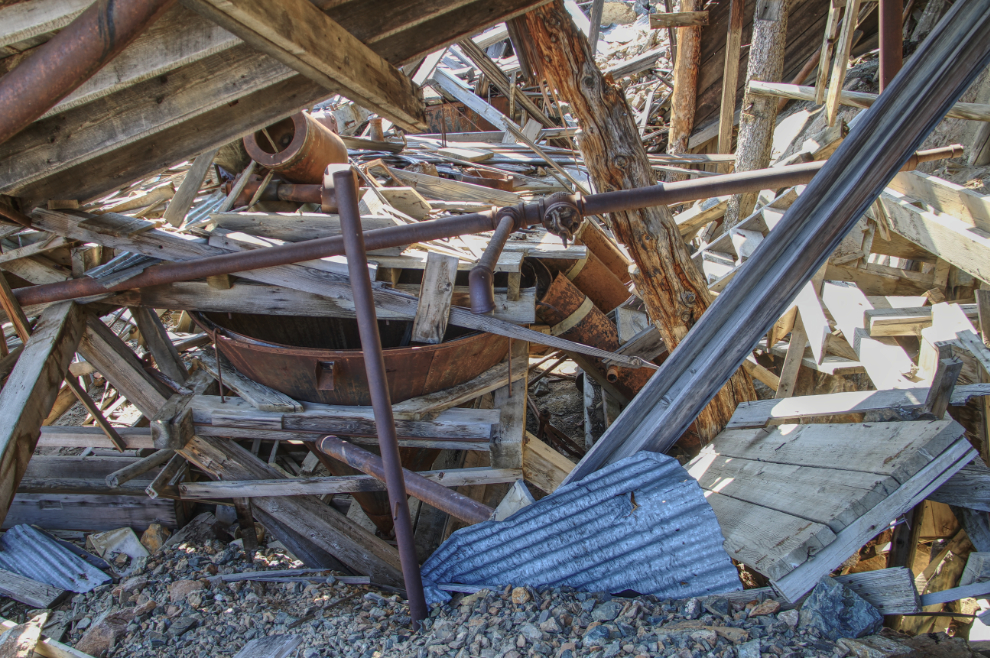
This support beam is stamped with the initials of one of the 4 companies Conrad was operating under – the Canadian Yukon Mining Company. Most of his Windy Arm mining properties, though, were operated by the Yukon District Gold Mines.
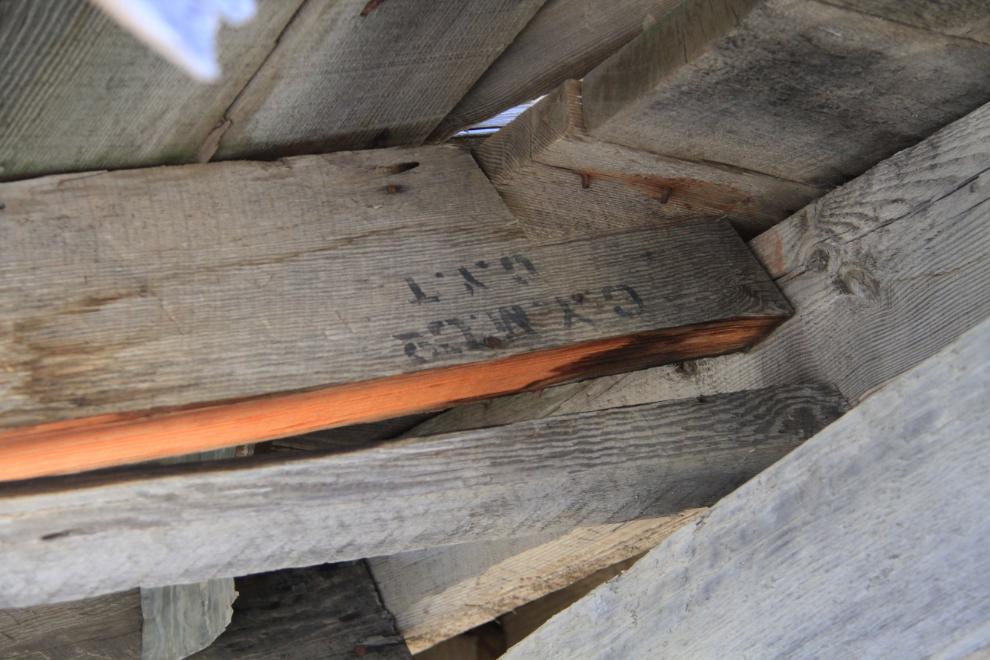
Given the slope it was built on, and the fact that it was built 107 years ago, much of the concentrator is in remarkably good condition.
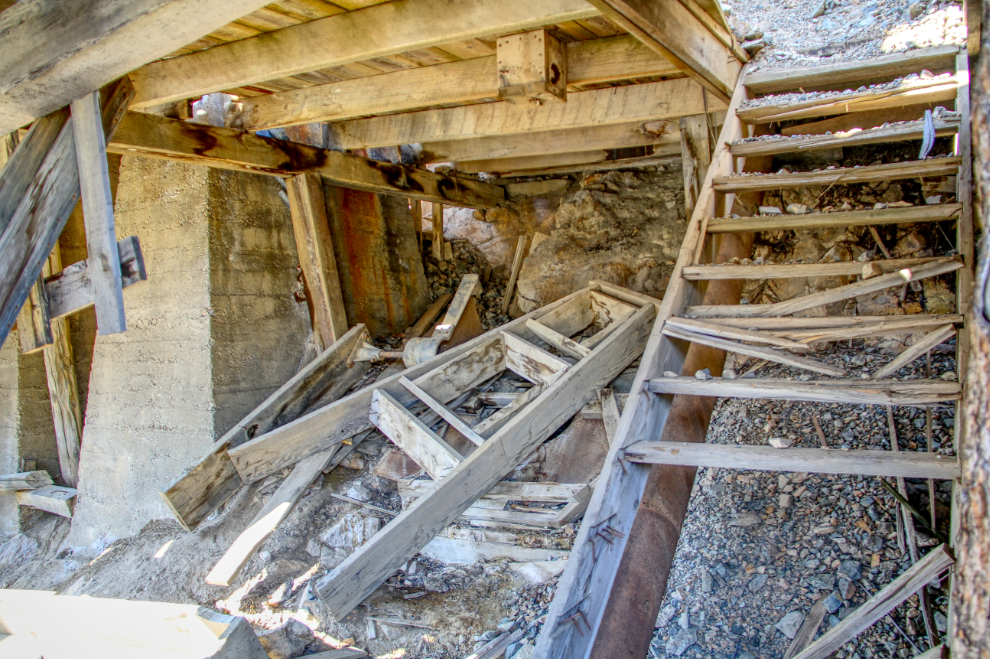
In the concentration process, a series of crushers reduced the ore to a size which would then allow the constituents of the ore to be separated by specific gravity. This “funnel” delivered a specific size rock to the sorting tables.
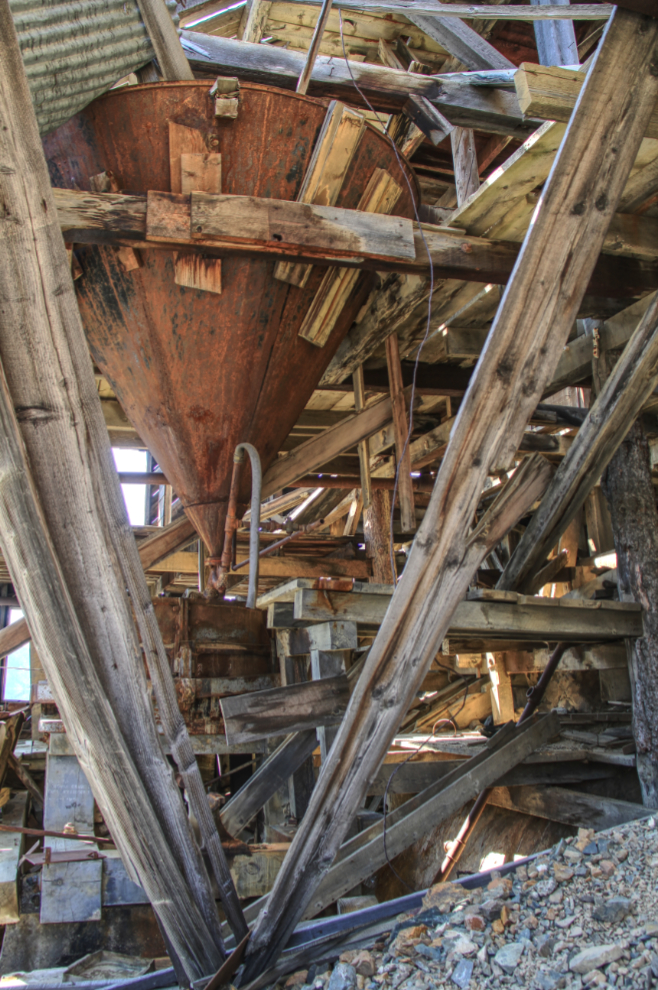
The view out one of the many windows.

This is a Wilfley table, which held about two tons of very fine ore known as slimes. The tables were steamed-heated before adding mercury to pick up the silver. Despite all the precautions taken in the selection of the concentrator design, however, the ore was so heavily oxidized that it broke up readily, and losses were unacceptably high. In November, the concentrator was shut down until it could be modified to rectify the problem. With some minor modifications to the mill, it was back in operation in December, and concentrates were being shipped out. Although some improvement in the recovery rate was noticed, it was still not what was hoped for, and the process was modified again several times over the winter.
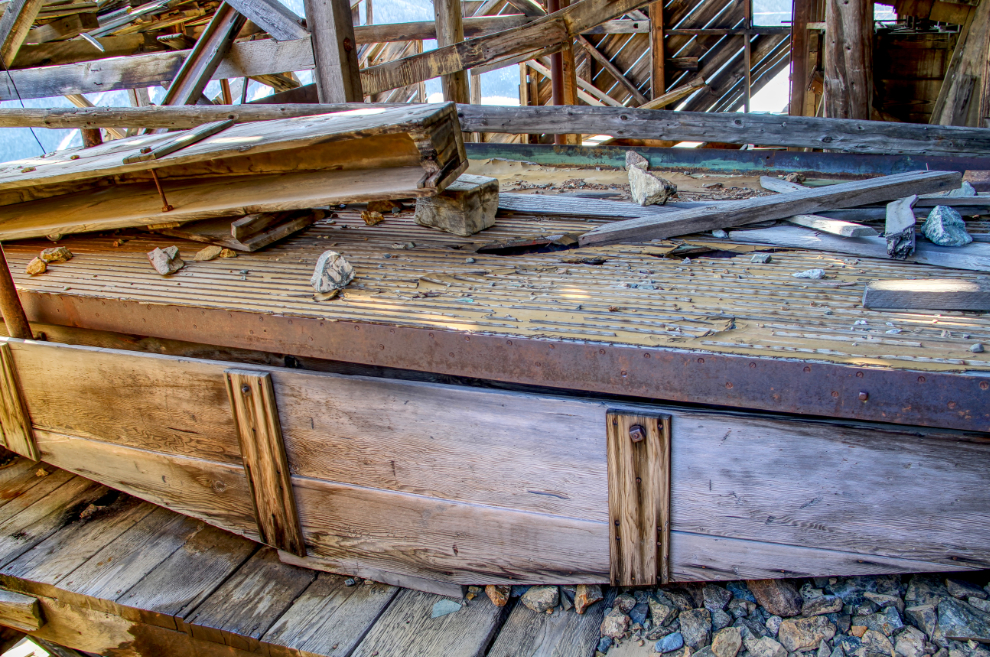
As I was climbing up through the concentrator, I was seeing machinery in the opposite order to which the ore would pass through it. The next 2 photos are different angles on one of the sorting trommels and related machinery.
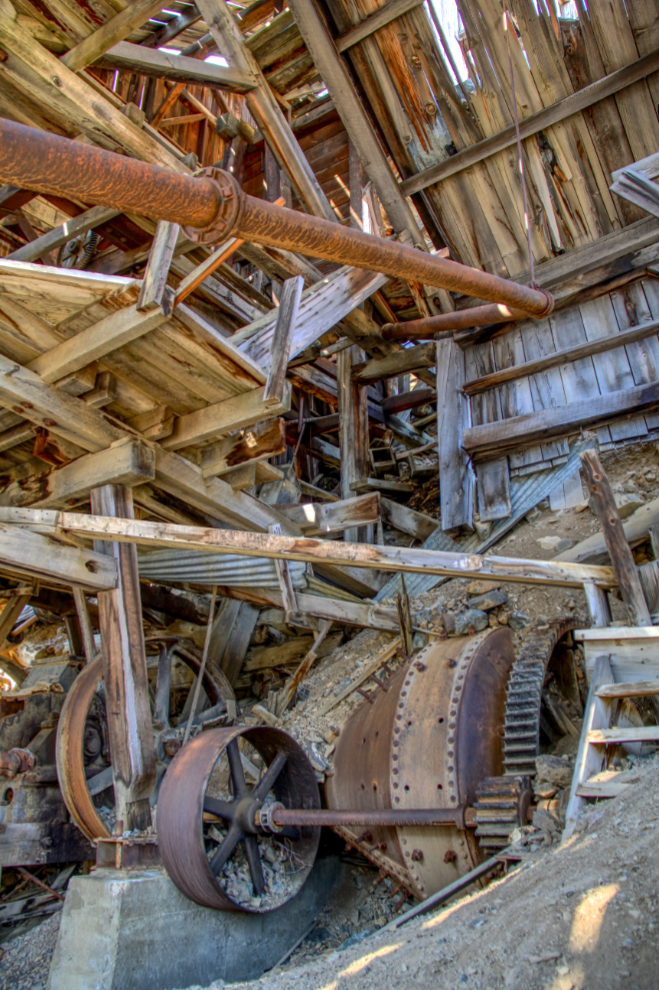
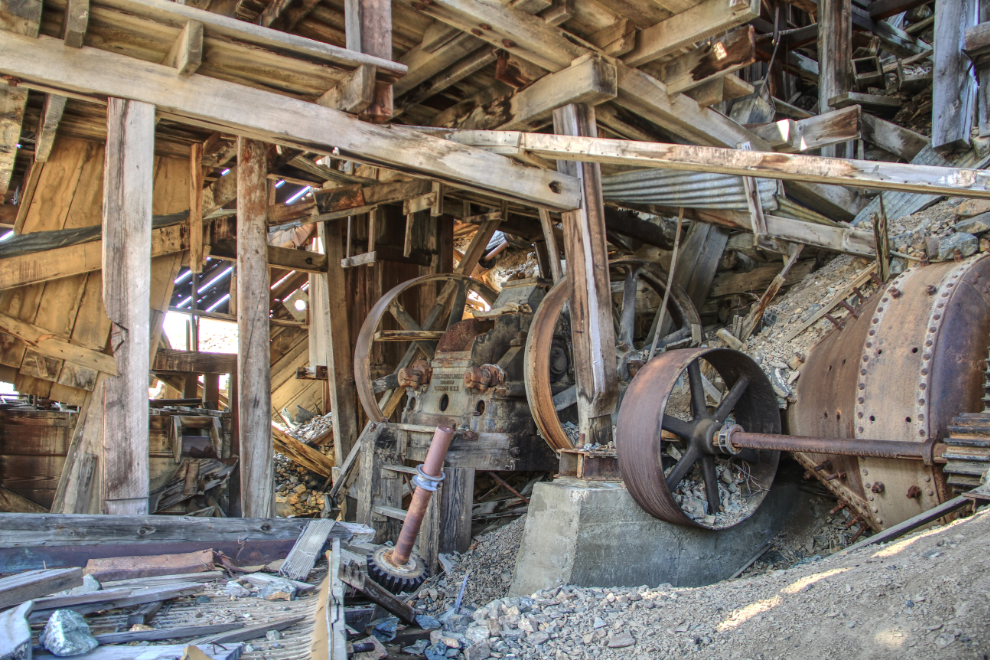
Looking up about 30 feet to a wooden drive wheel, which would have had a belt powering some of the sorting equipment.

I seldom shoot black-and-white photos, but it seems to work for this shot through a collapsed part of the roof.
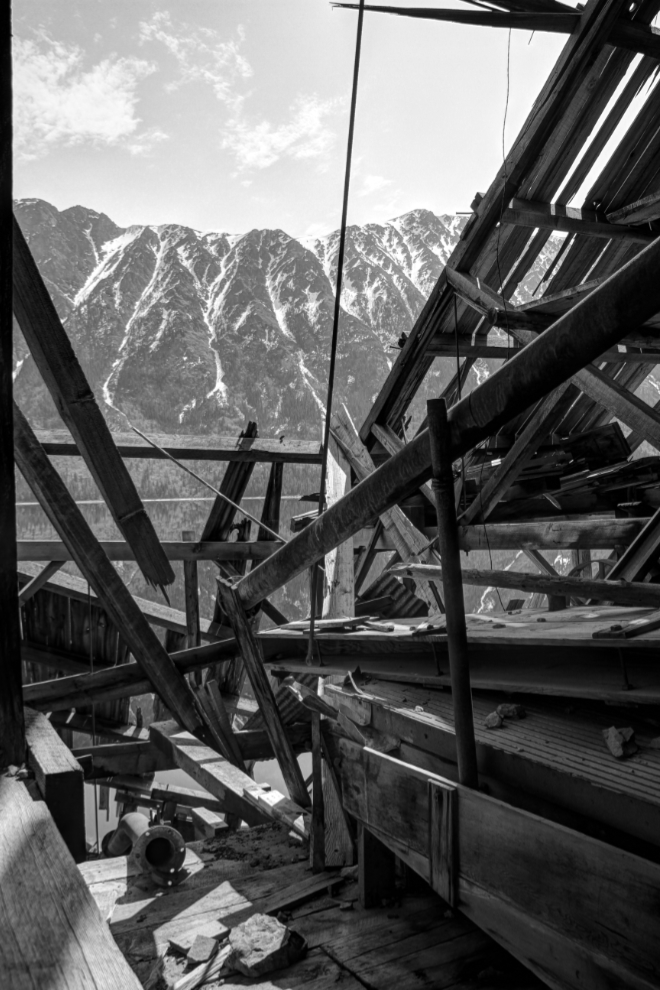
The largest engine in the mill was built by Gates Iron Works of Chicago.

Another of the sorting trommels.
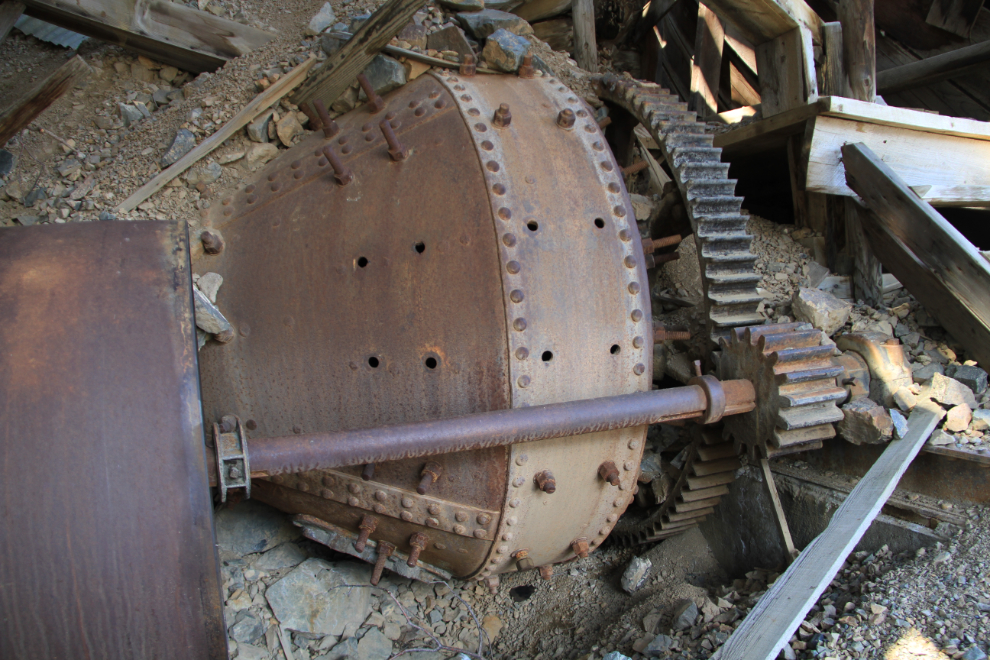
I couldn’t get near it, but I believe that this is a a Huntington crushing mill, used for the final crushing before concentration.

The machinery was changed several times over the years, and I expect it would take an expert in historic mining machinery to figure out what the pieces that are left did.
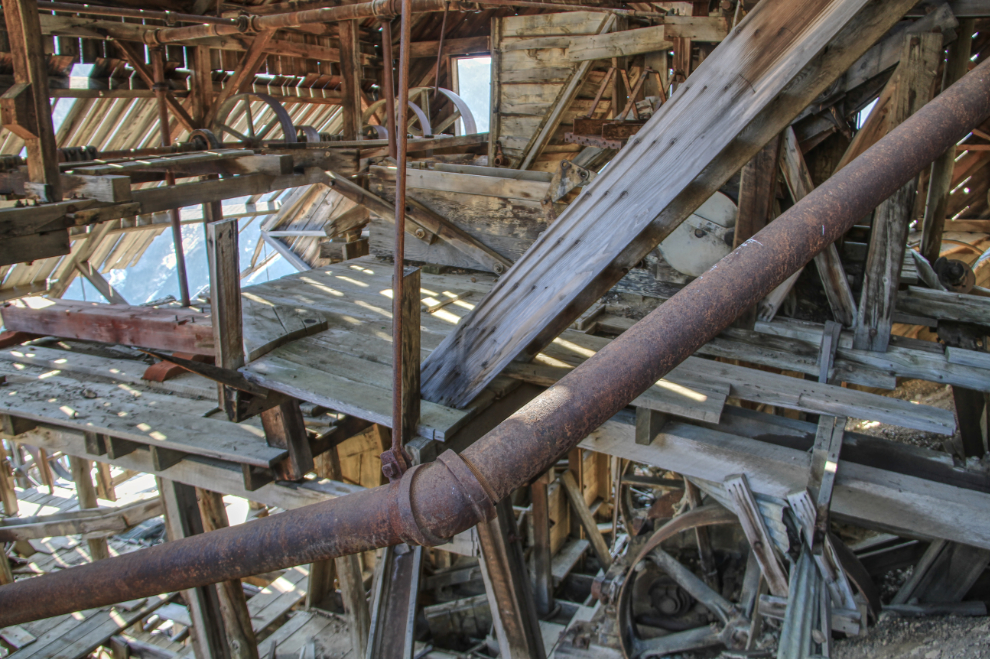
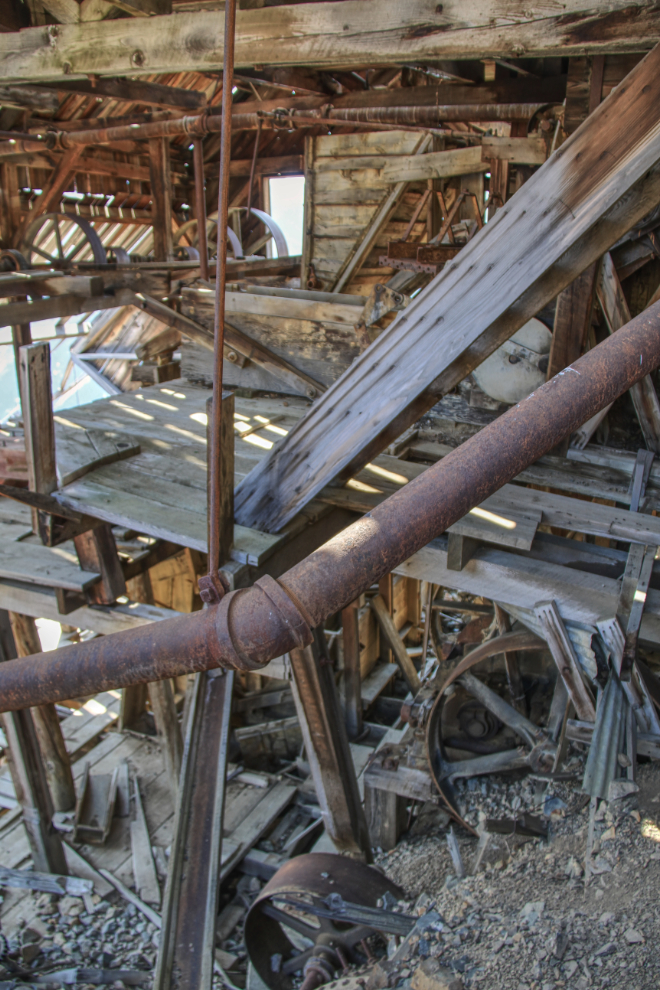
The upper sections of the concentrator are too steep to a solo explorer to climb through – this shot was taken from outside.
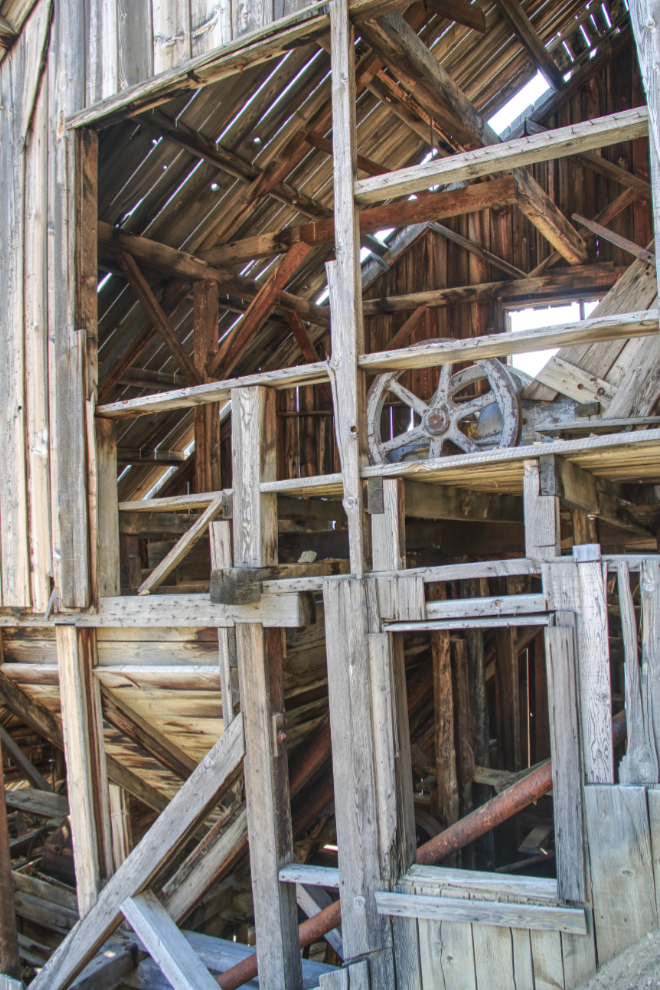
This photo of the entire south side of the mill is a panorama created by stacking 3 photos vertically. The concentrator was last used in 1919. In 1918, a new group of miners from Montana, operating as the Montana-Yukon Mining Company, had taken over the Venus mine. In May, they installed an oil flotation system in the old concentrator in an attempt to increase the silver recovery. By late June 1918, the mill was working at full capacity, and 800 sacks of concentrates were shipped out. The machinery at the concentrator was modified several times; in July 1918, a Hardinge mill and 2 double-deck Diester sliming tables were ordered, to increase the capacity of the mill, and a power plant that Colonel Conrad had installed at MacDonald Creek was moved to Pooley Canyon to provide more reliable electrical power than the Pelton water wheel had been able to supply. With more modifications, partially financed by Willard Phelps, the mill operated through the 1919 season with a crew of 15 in the mill, plus a few woodcutters, but then closed permanently.
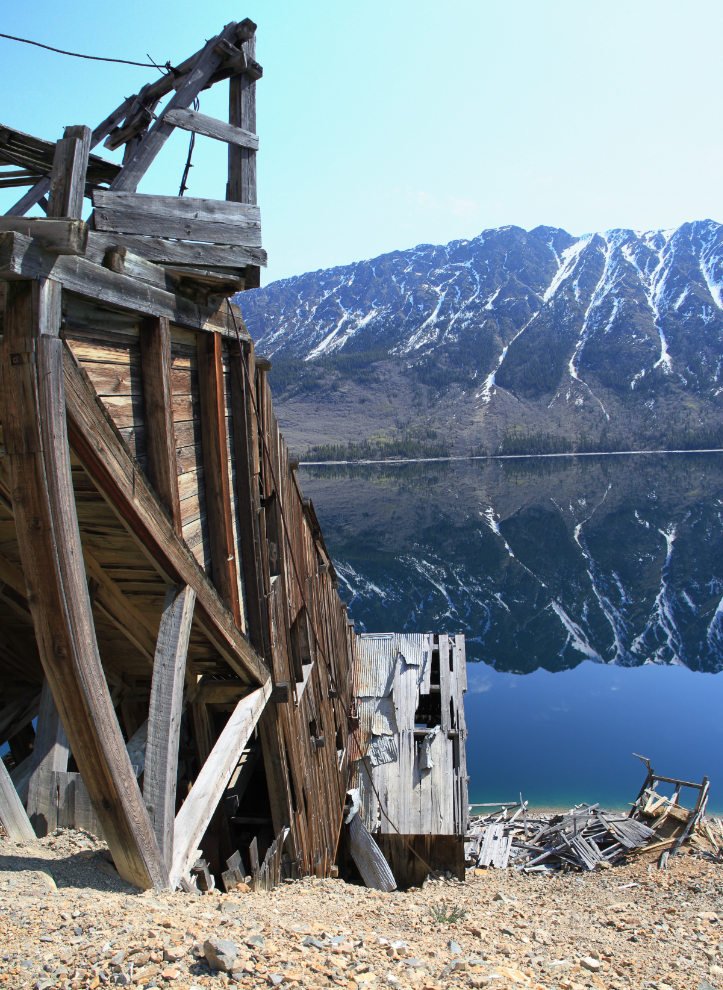
After reaching the top, I went back down the outside of the north side of the mill to about half-way, then went inside to see more details such as this little spout from a wooden tank.
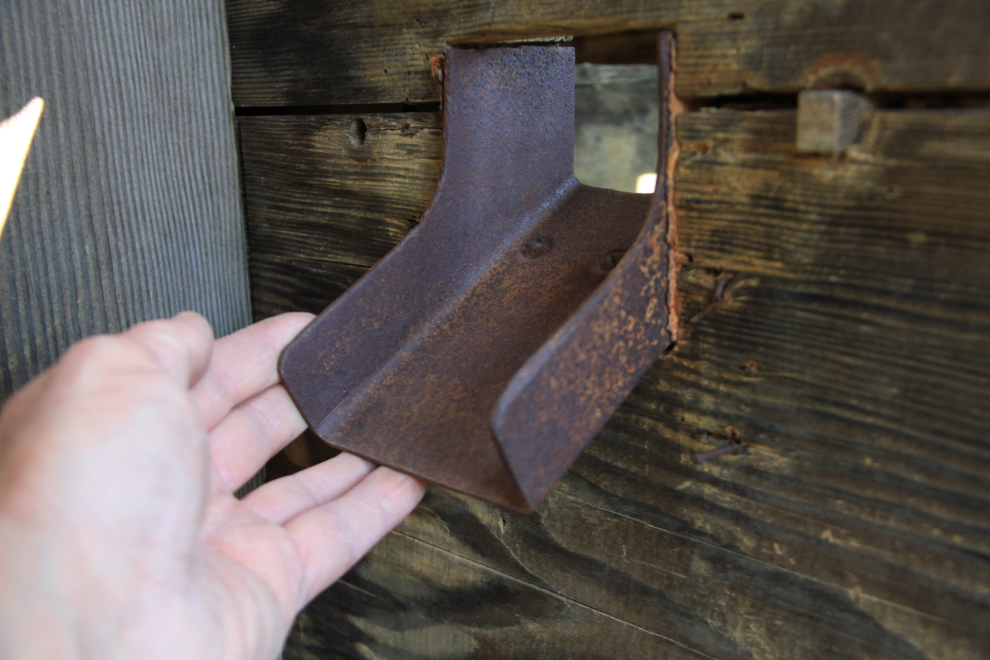
A final up-close look at the the south side.
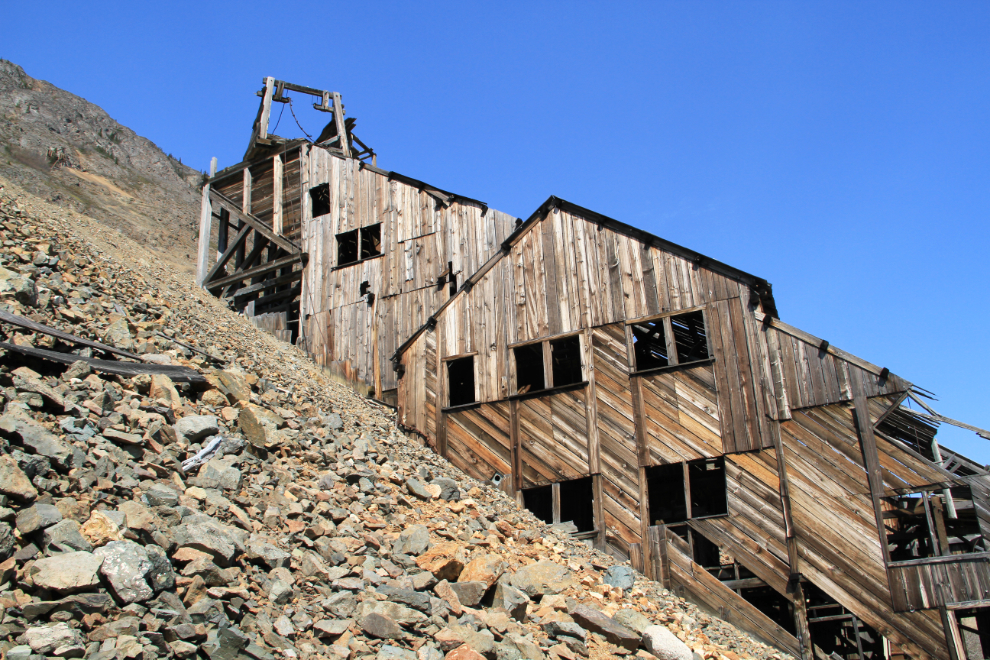
Descending back down to the lake, it was a real pleasure to see flowers growing on the slope.
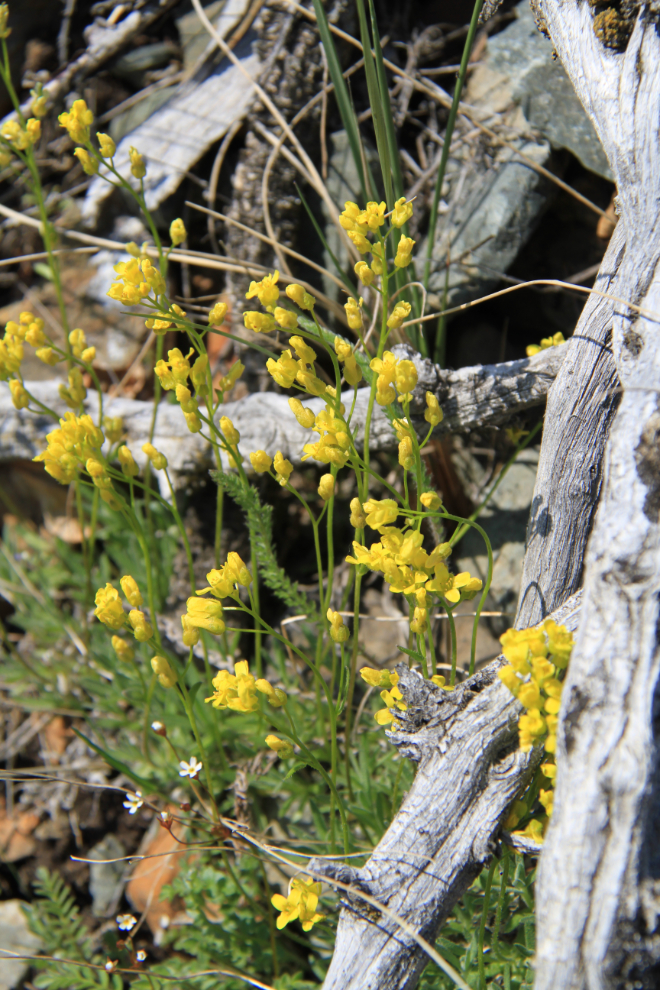
This odd structure is a slickenside, caused by frictional movement between rocks along the two sides of a fault. That sort of movement is part of what ultimately caused all the mines in this area to fail.

It just looks like a piece of rusty wire on the beach, buit this is from the private telephone system that connected all of the mines and related buildings from 1905 on.

With one final perfect reflection, my exploration and photo-documenting of the concentrator was finished.

Once I got back to the car, I decided to hike up to the Venus mine – but that’s another story, for the next post 🙂